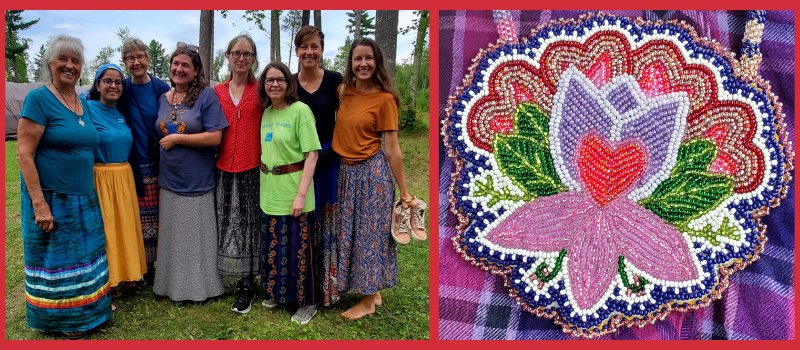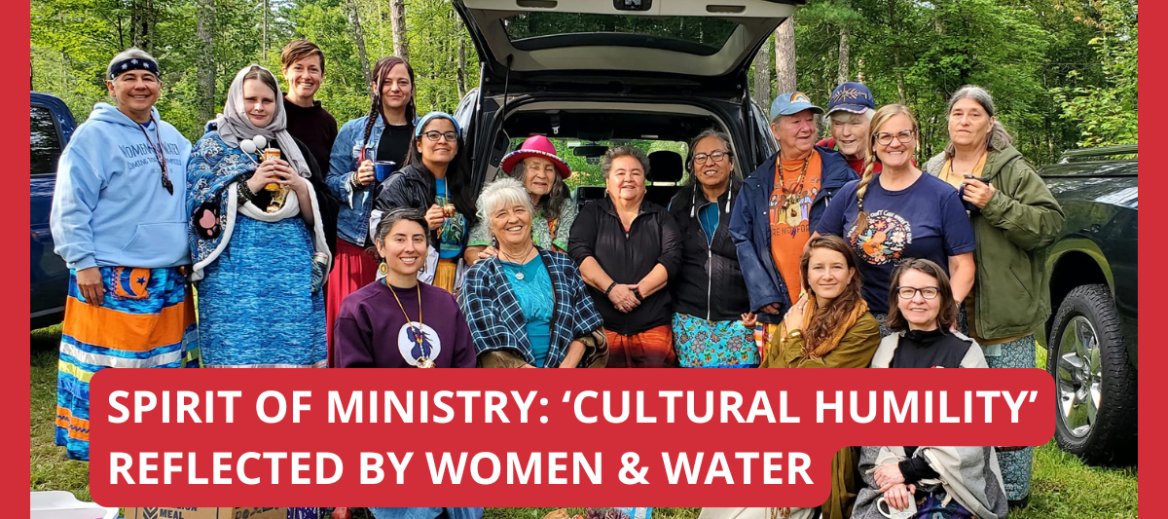By Wendie Libert, FSPA affiliate
The second largest ethnic group where I grew up, after the Euro-American population, was the people of the HoChunk Nation. At that time, in my community, Ho-Chunk children were my classmates in grade school. I also saw them occasionally at the swimming pool in the summer; however, we rarely — if ever — were playmates and friends. We did not attend one another’s birthday parties. I could never figure out what invisible force separated my world from theirs, nor how to bridge the gap.
The mission begins
Now I live and work at Marywood Franciscan Spirituality Center in Arbor Vitae, Wisconsin, 15 miles from the reservation of the Waaswaaganing, or Lac du Flambeau Band of the Lake Superior Chippewa Indians. One of the tribe’s elders came to Marywood last year to lead a fall ceremony; however, we often lack racial and ethnically diverse program attendees, including members of the Chippewa tribe. The insidious forces of colonialism continue to hold us apart. What will it take for me and others who feel called to engage in FSPA’s mission of truth and healing — listening to the painful and tragic experiences of Indigenous communities — to begin to heal that rift?
My spiritual connection
I can think of no better answer to that question than the Women & Water Coming Together Symposium held Aug. 4 to 8, 2024, at the Abiinooji Aki Cultural Healing
Center near Hayward, Wisconsin. This five-day immersion in Ojibwe culture and ceremony provided insights that could not be gained in any other way. I was plucked out of my own comfortable milieu and deposited in the very center of a literal dance that I had never experienced before: the ritual dance, song, stories and prayer of the people whom I have longed to know for most of my life. Being there, included in the lighting of the sacred fire, watching the attentiveness with which the men — the fire keepers — tended both the ceremonial fire and the fire of emotions experienced by those present, filled me with awe and deep humility. I was surrounded mostly by people with whom I was not acquainted, listening to songs sung in a tongue foreign to my ears and trying to remember the unfamiliar protocols of respect for the fire and the ceremonies. I felt so vulnerable, yet deeply grateful, for the courage and patience of the symposium hosts and presenters. Without diluting the reality of their lived experience, the people who led the ceremonies and sessions set aside generations of pain and distrust to guide us adeptly into the heart of their spirituality. They rallied us with unwavering resolve for the sacred work of protecting and healing Mother Earth.

Inspiration
Each day flowed with the same rhythm of ceremony, presentations and opportunities for healing toward raising our awareness of the history and personal
experiences of Indigenous peoples in the Americas and around the world. We were joined by presenters of the Ojibwe, Diné and Maori (New Zealand) tribes who sought to empower us with their words and witness; to enter into the transformation of ourselves and our societal systems for the good of our planetary home. We were reminded that the cultural destruction wrought by colonization often left Indigenous peoples locked in their own oppression. As they retrieve their identity and
heritage, including their languages, they are once again rising as agents of their own future. That may explain the terrible separation of the white and Ho-Chunk children on the playground of my youth and be the ultimate hope for a future that is very different.
Impact
As planet-wide Indigenous communities heal, all of us are called to seek a better balance between the gits those who tend the fire, of those who honor the water and embody the power of our Mother Earth. We must, as one presenter described in his story, seek an understanding of things that makes sense — the understanding that “the opposite of chaos isn’t law and order; it is HARMONY.” That harmony can be achieved if we strive to shift from a paradigm of “power over” to “power with” that honors the dignity and value of every person and thing within the Earth community. Inspired by the courage and passion of the people I met at the Women & Water Symposium, and steeped in a deep sense of cultural humility, I brought home great hope for the future of our world. Let it be so.
Wendie shares some of her learnings about Ojibwe history rich in language and culture:
Prior to the arrival of French fur trader Jean Nicolet in the 17th century, the Anishinaabe (“True People”), comprised of the Ojibwe, Ottawa and Potawatomi Tribes, migrated westward from the North Atlantic coast in search of a new homeland. The prophecy that had foretold the coming of Europeans also instructed the
Anishinaabe people to seek the place where food grew on the water. As the tribes neared Lake Superior, where they discovered beds of wild rice growing atop the
sloughs — manoomin — all that had been predicted was fulfilled. Some of the bands from among the three tribes moved north into what would become Canada, while others settled across present day Michigan, Wisconsin and Minnesota.
Despite the generations of exploitation and genocide inflicted on the Anishinaabe people through treaties and U.S. government policies that displaced them from their land and their cultural heritage, the Waaswaaganing — the Lac du Flambeau Band of the Lake Superior Chippewa Indians — named for the technique for spear fishing by torchlight, was among the Ojibwe bands whose reservation was established by the Treaty of 1854.
Wendie Libert, a longtime affiliate of FSPA, serves as director of Marywood Franciscan Spirituality Center in northeastern Wisconsin. Supporting FSPA efforts to promote land justice and reparation for the harms of the boarding school era is an important part of her ministry.

